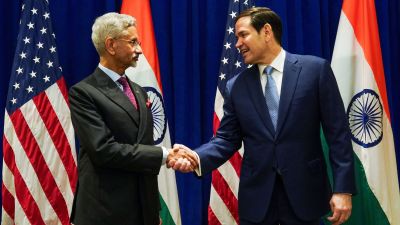Why striking airport unions should meet comrades in China
Soon after the financial bids were opened and the job of revamping Delhi and Mumbai airports awarded to two private consortia, the Left-back...

Soon after the financial bids were opened and the job of revamping Delhi and Mumbai airports awarded to two private consortia, the Left-backed airport unions announced a strike. While they cool their heels tomorrow, they could look next door to their comrades in China.
Already boasting several world-class gleaming international gateways, the world’s biggest airport is currently under construction in China’s capital, Beijing. Not just Beijing, as of now, more than 20 airports are undergoing extensive upgradation, an estimated 80 are being built to provide passenger and cargo feeder line service for the largest airports.
“Every city in China wants to have its own international airport and so this is really an exciting emerging sector for public-private partnerships,’’ says Patrick Horgan, President of the British Chamber of Commerce in Beijing. The problem, he says, is actually “restraining excess investment rather than making things happen.’’
“For China, airports are a No. 1 priority because as our economy grows they need to match that growth,’’ says Wang Kun Zhi, Director, Airport Construction Division, Civil Aviation Authority of China.
And while India has taken just the first step on the reforms path, China has been aggressively setting its house in order over the past few years.
Until 1979, the Government controlled both airports and airlines through the Civil Aviation Administration of China (CAAC). In 1979, the regulatory and the operational roles were split—with CAAC becoming a regulator and six national airlines set up over the years.
However, the transfer of ownership of China’s commercial airports from the CAAC to local municipalities began only in 2002 and was concluded in July 2004.
The Beijing Capital International Airport Terminal 3, is expected to take less than three years to complete and will outdo in size both the current biggest airports, Chek Lap Kok in Hong Kong and Heathrow in the UK. Dutch airport planners NACO and UK engineers ARUP have teamed up with British architect Lord Norman Foster and partners and the Beijing Institute of Architectural Design and Research to ensure the $2 billion new terminal is functional in time for the 2008 Olympic games.
Beijing Capital International Airport currently has two terminals, with two runways and is the fourth-busiest airport in Asia, with a capacity to handle around 35 million visitors per year and 60 flights per hour.
But with passenger traffic expected to exceed 60 million per annum by 2015, it was decided to construct another terminal. According to Lord Foster’s website, the new Beijing airport terminal’s “soaring aerodynamic roof will reflect the poetry of flight. All passengers will enjoy a fully glazed single, lofty space, day lit through roof lights and bathed in colour changing from red to yellow as you progress through it.’’
The city of Guangzhou’s new international airport opened in August last year at a cost exceeding $ 2 billion and construction for its second phase which aims to double its current 27 million passenger capacity is already underway, scheduled to be completed by 2009.
Never one to be easily upstaged, Shanghai also has flyaway plans to match soaring passenger traffic as the city takes on global economic importance. Its hyper-modern Pudong airport, connected to the city by the world’s first operational magnetic levitating train, opened in 1999.
A second runway was opened this March. Now, construction is underway for a second terminal to be completed by 2007 and the airport’s long-term plan calls for a total of four terminals and four runways, for a final capacity of 80 million passengers per year.
Photos


- 01
- 02
- 03
- 04
- 05





























